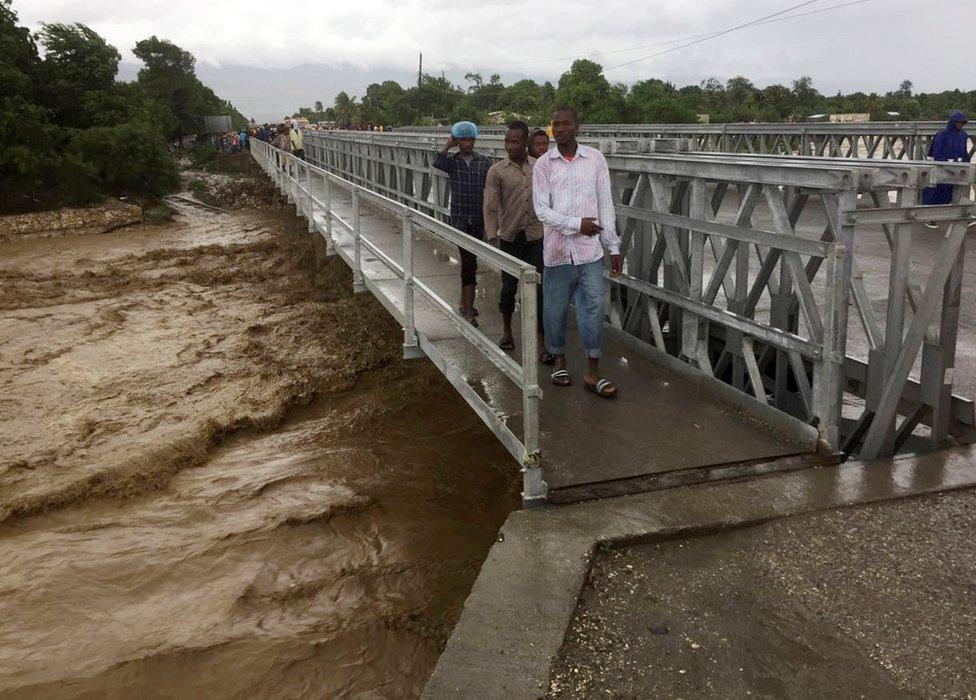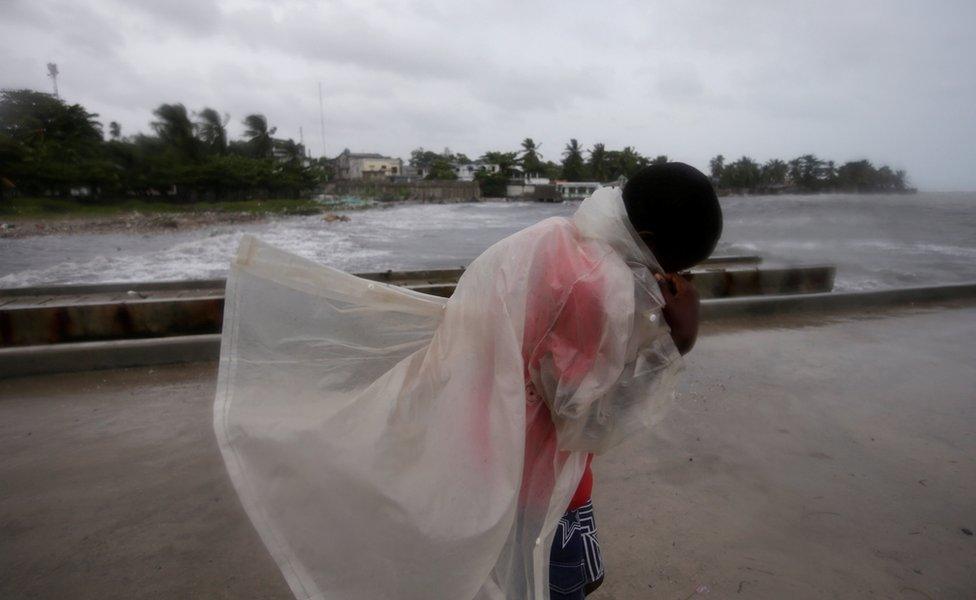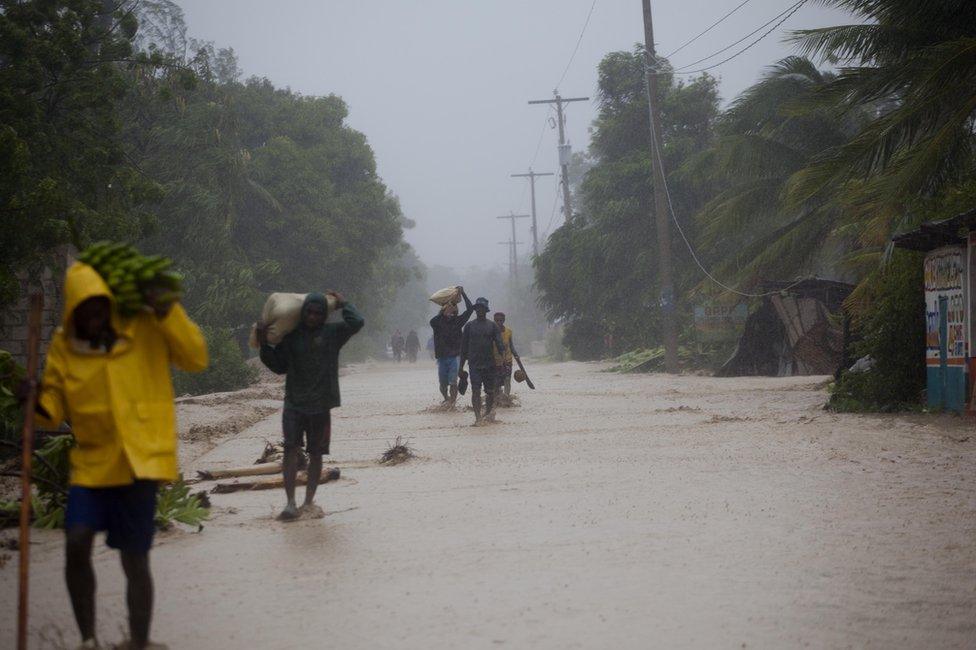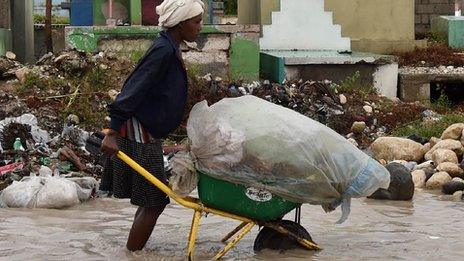Haitians describe their ordeal at the hands of Hurricane Matthew
- Published

People cross a bridge while Hurricane Matthew passes in Haiti's capital, Port-au-Prince
Haiti has been battered by 145mph (230km/h) winds and ferocious storms, brought by the most powerful Caribbean hurricane in nearly a decade.
Matthew made landfall at around 11:00 GMT, bringing flooding, destruction and blackouts.
In the southern city of Les Cayes, Deputy Mayor Marie Claudette Regis Delerme called the scenes "catastrophic".

Dr Robert Leger, 64, is a general surgeon whose clinic is on Rue Nicolas Geffrard, one of the main streets in Les Cayes. He was born in Haiti, and while he moved away to study he has been back for 35 years now. He spoke to the BBC by telephone, after first changing into dry clothes.
"We [himself and his wife Rosa] just arrived at home, my residence, to see how things are. Many houses have been affected, a lot of floodwater on the streets - and it's still raining. The water on the streets, it can be two or three feet."
Dr Leger and his wife were walking home from his clinic during the deluge when they were spotted by one of his patients, who gave them a lift in his pick-up truck. However, the vehicle couldn't reach their home through the waterlogged roads, so they had to walk the last stretch.
He said: "I am really worried. Haiti has already had a lot of economic problems - and now Mother Nature has added more troubles. This last month, the production of rice and beans had increased, and now agriculture will be badly affected."

The southern city of Les Cayes has been at the heart of the hurricane
Asked about the hurricane's impact, Dr Leger said: "Many, many roofs are completely off. Many trees down, and destroyed walls. Roads are blocked. There is damage. People are staying indoors - the wind has started again. Nothing is normal now, and it's not likely to be until tomorrow."
Dr Leger is a leading member of the local Rotary Club, and says he will assist with relief work when the hurricane has moved on, as he did after the earthquake in January 2010.
"I have been spared, thanks to God, so I will offer my services as a surgeon."

The BBC's Nick Bryant reports from Haiti as Hurricane Matthew hits
'Battening hatches'
While Haiti's southern peninsula has been worst hit, the hurricane's immense power saw people 40 miles from its centre placed under a severe weather warning. Storm-force winds were scouring regions 185 miles away, near the capital Port-au-Prince.
The BBC spoke to Jacqui Labrom, a Port-au-Prince resident and chief executive of Voyages Lumiere Haiti, external, a tour company offering excursions all over the country.
She said the capital had seen the storm's violence, but she feared most for those on the south-west coast around the city of Jeremie.

Many towns have seen their streets flooded and the roofs sheared off buildings
"Since yesterday people have been battening down the hatches," she said. "They have been saying that in certain places [in Haiti] the sea is up by about three metres. A lot of people live near the sea to do fishing because it's often the cheapest area."
Ms Labrom, who has lived in Haiti for 18 years, said she would not leave her house until the storm passed, and had stocked up on food for several days.
Elsewhere in the capital, American journalist Jacqueline Charles was also riding out the storm. She reiterated fears for impoverished locals whose homes are near the sea.
"There are a number of streets that are starting to flood," she said after the hurricane made landfall. "I can tell you that around the country, especially in the south, they have been battered. We're hearing reports over local Haitian radio - and I myself have spoken to some relief workers - that there are coastal communities that are under water.
"One local reporter who was looking at some photographs said that in Les Cayes there are people walking in water that is shoulder-high. Houses have lost their rooftops; houses have been damaged and the winds are very powerful."

- Published4 October 2016

- Published4 October 2016

- Attribution
- Published4 October 2016

- Published6 October 2016